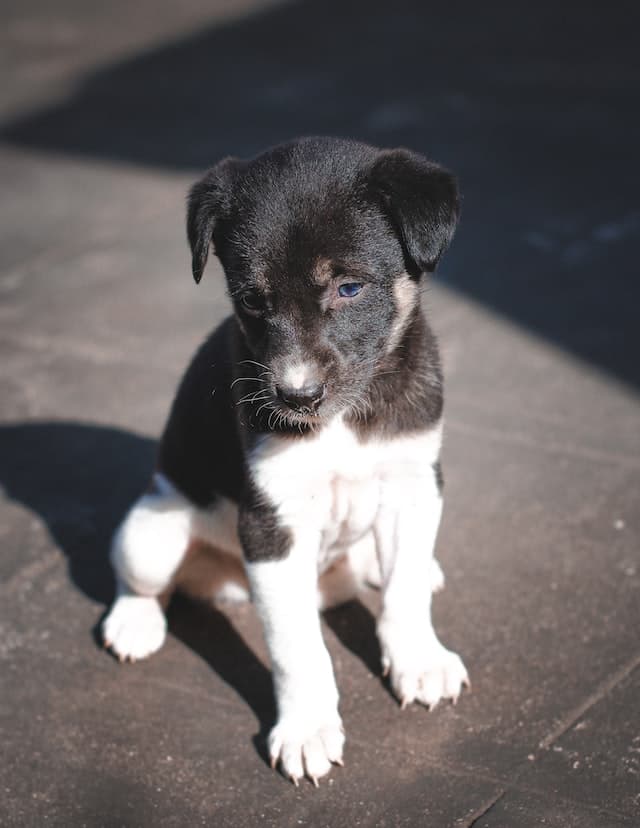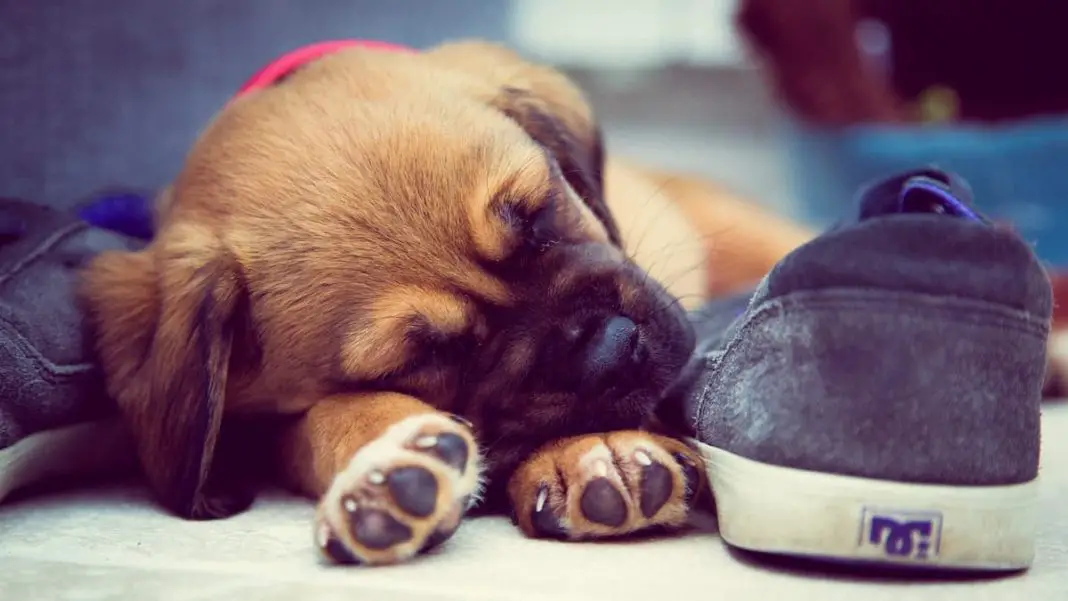What To Do If Your 8 Week Old Puppy Doesn’t Want To Play
Bringing home a new puppy is always an exciting time and no there’s doubt about it, you’re going to have a lot of fun together. But you may have expected your new puppy to be a little more playful. Let’s get into why your 8-week-old puppy doesn’t want to play and seems shy.
What’s Normal Behavior For A 8 week old Puppy?
Personality Change
It’s common to see some personality changes during the first few days.
A puppy that was bold and outgoing with its siblings, may all of a suddenly seem quiet and withdrawn. This could be the reason why your puppy doesn’t seem to be interested in playing with their new toys. This is all perfectly normal.
Remember that your 8-week-old puppy has just left their canine family and come into an unfamiliar environment, with new people. It may be feeling scared, lonely and anxious, or even a bit homesick. So, this behavior is totally understandable, even if you didn’t expect it.
Many puppies can become more withdrawn into themselves, causing them to sleep more than usual, lose their appetite or generally not behave in the playful manner that you’d expect from a young puppy. The good news is that this should only last for a few days, maybe a week, and then you’ll begin to see your new puppy’s true personality emerge.
If your 8-week-old puppy seems to be calm and laid-back – you’ll probably find that by the following week you have an energetic and playful pup on your hands.
Anxiety
When bringing an 8-week-old puppy home for the first time, it’s normal to see a bit of anxious, nervous behavior at first and some breeds, or individual puppies, can have highly strung personalities and get upset easily.
Some puppies can get so stressed in the beginning that they don’t feel the need to poop (or even pee) for a while! However, a young puppy generally has very limited bladder/bowel control.
If you find that your puppy whines and cries whenever you’re out of sight, don’t be afraid that there is something wrong with their health or with the way you’re taking care of them. The puppy is just scared and misses their litter-mates. Your puppy’s instincts are telling them that they need to be right next to you at all times to be safe.
Although, if you find yourself in this situation, it’s not a good idea to let your puppy be attached to you at the hip at all times, either. Puppies need to learn that it’s okay to be alone for short periods and that you’ll always come back for them. A puppy that doesn’t learn this when they’re young can grow into a clingy, anxious dog with real separation anxiety.
When your puppy is using a crate, some crying, complaining, whining and howling is normal although if a puppy becomes totally hysterical when crated/left alone, loses control of their bladder/bowels and acts in a way that could cause them injury then it’s possible that they’re already showing signs of puppy separation anxiety and this needs to be addressed quickly.
There’s a product that’s highly recommended by many new puppy owners, that can help your puppy feel less alone at night time. It’s called a SnugglePuppy. The SnugglePuppy is a plush, stuffed puppy that comes complete with a battery-operated heartbeat and two sources of gentle heat.
It’s great for a real live puppy who’s just left its littermates. This is like a little piece of home and can be very soothing.
You’ve dreamed of the day you could bring home a playful puppy who shows you plenty of love. But what if your puppy isn’t like that? Maybe she’s timid and wants to hide under the table all day. Don’t worry; you can get a shy pup to be more active.

Steps To Help A Shy Puppy
Step 1
It’s important to introduce a shy puppy to new people, dogs and places. A good way to do this is on your daily walk. You should remain calm and relaxed if you expect your shy puppy to be that way, too. If you tense up when another dog walker nears or when a kid on a bicycle rides by, your puppy will probably pick up on your nervous energy and fear people and dogs even more.
Step 2
Socializing your puppy—introducing your puppy to as many situations, animals and people as possible—during her first 12 weeks of life is important. During the first 12 weeks, puppies are naturally more social than fearful. As many puppies tend to be shyer around men and small children, if they aren’t introduced to them during the first 12 weeks of their lives, it can make it harder for them to interact with others in the future. Although you can still successfully introduce a shy puppy to new people and situations after 12 weeks, it may take longer to get a positive reaction.
Step 3
Enrolling a cautious puppy to kindergarten—classes that help socialize shy pups are useful for bringing out your puppy’s personality. You can find local classes within your area by asking your vet or on social media. These classes will help your puppy to be comfortable around other dogs, different people, new places and strange sounds. A puppy will also learn how to deal with stress and new situations. It also helps new puppy owners learn about doggy development and how to prevent behavior problems.
Step 4
Keeping your puppy around people rather than secluding it in a kennel or the backyard gets them used to the hustle and bustle of the house, including loud noises such as the vacuum cleaner, dishwasher and washing machine.
Step 5
Giving your puppy enough attention is important. You should pick up your 8-week-old puppy at least once a day. Hold the puppy in different positions, making sure you handle different parts of her body. Other than helping it become less shy, this makes it a lot easier for you to perform grooming activities.
Step 6
Invite a friend over—one your puppy hasn’t met. If your puppy is shy around your friend, tell your friend to sit down, sideways to your puppy. Your friend shouldn’t be looking directly at the puppy, as puppies can interpret this as threatening behavior. The friend should then extend their hand, holding a tasty treat. The goal is for your puppy to take the treat from your friend’s hand. Once your puppy has taken a few treats and appears to be more confident, your friend can try to stroke your puppy under its chin, which is a less threatening place than the top of the head. You can repeat this process with different people in different parts of the house or outside.
Conclusion
Bringing home an 8-week-old puppy can be challenging for a new puppy. After all, the puppy has all of a sudden been taken from its littermates and needs a few days and weeks to get used to you and their new surroundings.
To help your new puppy adjust, try to work through the tips mentioned above which should speed up the process of your puppy getting used to you, and for you to become more comfortable around them.








